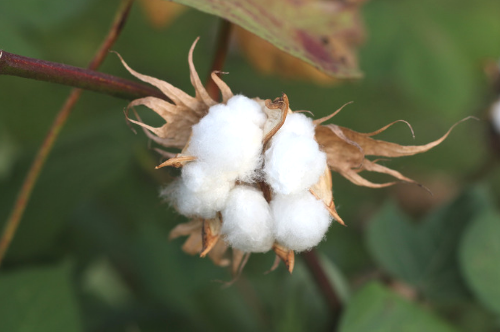In the world of fibers, certain terms are used loosely, especially in product marketing. The term “natural fiber” is such a term, and its meaning has been stretched in the last several years to include some fibers, such as viscose rayon, that don’t hold up well as natural fibers when submitted to credible scrutiny.
A Scientific Definition of Natural Fiber
According to a reference module in the 2018 edition of Materials Science and Materials Engineering, natural fibers are a renewable resource and have several advantages associated with them, such as that they impart the composite high specific stiffness and strength, have a desirable fiber aspect ratio, are biodegradable, are readily available from natural sources.
Examples of Natural Fibers
Natural fibers come from many sources. These sources can include plants, animals, and minerals.
We are probably most familiar with plant and animal fibers from a consumer standpoint. Common natural fibers sourced from the plant kingdom include cotton, flax, hemp, bamboo, sisal, and jute. Their main component is cellulose. From animals, we get popular fibers like wool, silk, angora, and mohair.
Benefits of Cotton, the Ultimate Natural Fiber
Perhaps the most ubiquitous natural fiber worldwide is cotton, which is produced in dozens of countries and consumed by people of virtually every nation. Cotton is a versatile fiber, used in a wide variety of market applications from apparel to bed linens and towels, as well as nonwoven hygiene products and medical and dental supplies.
Cotton has many benefits that drive this variety of applications.
- Cotton doesn’t retain odors, so you can wear more and wash less.
- Cotton can be used to construct every kind of clothing, from gym shorts to evening wear.
- Cotton is tough and durable, and many products made with its fiber last for years.
- Cotton is easier to wash and maintain than fabrics made with other fibers, both natural and artificial.
- Cotton holds its shape longer than fabrics infused with high percentages of engineered fibers like spandex
- Cotton is actually a high-performance wicking fiber that provides even higher breathability than polyester, moving moisture and heat away from your body.
- In addition to these major benefits, cotton doesn’t cling, stink, pill, or irritate the skin!
Why Are Natural Fibers Like Cotton Important Beyond Their Benefits?
Just from a quick analysis of cotton fiber, we can see that natural fibers offer a variety of benefits to consumers. Going beyond consumer benefits, natural fibers like cotton are renewable and offer greater environmental sustainability than their man-made counterparts.
Artificial fibers are the result of reactions with oil-based products. As a fossil fuel, oil is not renewable, and exploration and drilling of oil have many negative effects on the environment. Perhaps a more immediate threat to the environment is the proliferation of viscose rayon, often marketed as a natural fiber. While often purported to be a natural fiber, since viscose rayon starts with cellulose from trees, this fiber is anything but natural, as the process of creating viscose rayon is heavy in its reliance on multiple toxic chemicals.
We believe that cotton fiber has nearly endless potential applications. The continued dominance of cotton in a variety of marketplace uses will allow for continued accessibility for a renewable, sustainable resource for several different industries ranging from apparel to healthcare.
